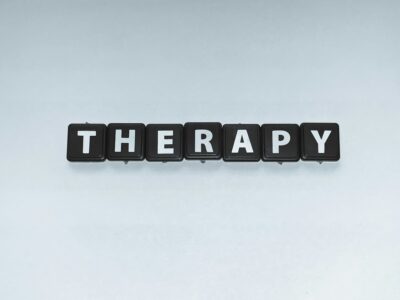When persistent feelings of sadness, hopelessness, or emotional numbness begin to interfere with daily life, it’s natural to seek effective ways to regain emotional balance. Cognitive Behavioral Therapy (CBT) offers a scientifically-backed approach that has helped millions of people worldwide manage and overcome periods of low mood. Unlike other therapeutic approaches that may take years to show results, CBT techniques for low mood are practical, goal-oriented strategies that can begin making a difference in how you think and feel within weeks.
CBT operates on the fundamental principle that our thoughts, feelings, and behaviors are interconnected. When we experience low mood, negative thought patterns often become automatic, creating a cycle that perpetuates emotional distress. The beauty of CBT lies in its ability to break this cycle by teaching individuals how to identify, challenge, and replace unhelpful thinking patterns with more balanced and realistic perspectives.
Research consistently demonstrates that CBT techniques for low mood are as effective as antidepressant medications for many individuals, and the benefits tend to be longer-lasting. This approach empowers people to become their own therapist, developing a toolkit of skills that can be applied whenever challenging emotions arise. Whether you’re working with a mental health professional or exploring self-help strategies, understanding these evidence-based techniques can be transformative for your emotional well-being.
Understanding the CBT Model for Emotional Wellness
The foundation of CBT rests on the triangle model that illustrates how thoughts, feelings, and behaviors continuously influence each other. When experiencing low mood, this triangle often becomes trapped in negative patterns. For example, the thought “I’m not good at anything” leads to feelings of sadness and worthlessness, which then result in behaviors like social withdrawal or avoiding challenging tasks. These behaviors, in turn, reinforce the original negative thought, creating a self-perpetuating cycle.
Breaking free from this cycle requires awareness and intentional intervention at any point in the triangle. CBT teaches that while we cannot always control what happens to us or our immediate emotional reactions, we do have significant influence over our thoughts and behaviors. By learning to recognize automatic negative thoughts and behavioral patterns, individuals can begin to make conscious choices that promote emotional healing and resilience.
The CBT model also emphasizes the importance of identifying triggers and understanding personal patterns. Low mood rarely occurs in isolation; it’s often connected to specific situations, relationships, or internal experiences. Through careful observation and tracking, individuals can begin to recognize their unique patterns and develop targeted strategies for managing difficult emotions before they become overwhelming.
Cognitive Restructuring: Challenging Negative Thought Patterns
One of the most powerful CBT techniques for low mood is cognitive restructuring, which involves systematically identifying and challenging distorted thinking patterns. Common cognitive distortions include all-or-nothing thinking, catastrophizing, mental filtering, and personalization. These thought patterns often feel completely true when we’re experiencing them, but they typically represent an inaccurate or overly negative interpretation of reality.
The process begins with developing awareness of automatic thoughts—those immediate, often unconscious reactions we have to situations. When you notice your mood dropping, pause and ask yourself: “What was just going through my mind?” Write down these thoughts without judgment. Once identified, examine the evidence for and against these thoughts. Ask questions like: “Is this thought completely accurate?” “What would I tell a friend having this same thought?” or “What’s a more balanced way to view this situation?”
Cognitive restructuring isn’t about positive thinking or denial of genuine problems. Instead, it’s about developing a more accurate, balanced perspective that acknowledges both challenges and possibilities. This technique requires practice and patience, as negative thought patterns have often been reinforced over months or years. However, with consistent application, most people notice significant improvements in their mood and overall outlook within a few weeks of regular practice.
Core CBT Techniques for Managing Low Mood
Understanding and implementing CBT techniques for low mood requires a systematic approach that addresses both thought patterns and behaviors. These evidence-based strategies have proven particularly effective in helping individuals break free from cycles of negative thinking and emotional distress that characterize depressive episodes.
Cognitive Restructuring: Challenging Negative Thought Patterns
One of the most powerful CBT techniques for low mood involves identifying and challenging distorted thinking patterns. This process, known as cognitive restructuring, helps individuals recognize automatic negative thoughts and replace them with more balanced, realistic perspectives. For example, when someone thinks “I always mess everything up,” this technique teaches them to examine the evidence and develop a more accurate thought like “I made a mistake this time, but I’ve succeeded in many other situations.”
The cognitive restructuring process typically involves four key steps: first, identifying problematic automatic thoughts; second, recognizing cognitive distortions such as all-or-nothing thinking or catastrophizing; third, rationally disputing these thoughts using evidence; and fourth, developing more balanced alternative thoughts. This systematic approach helps create lasting changes in thinking patterns that contribute to improved mood stability.
Thought Records and Monitoring Techniques
Thought records serve as practical tools within CBT techniques for low mood, allowing individuals to track their emotions, thoughts, and situations systematically. These structured worksheets help people identify triggers for negative moods and patterns in their thinking. A typical thought record includes columns for the situation, emotional response, automatic thoughts, evidence for and against the thought, and a more balanced perspective.
Regular use of thought records helps individuals develop greater self-awareness and emotional regulation skills. By consistently documenting their experiences, people can identify recurring themes and work on specific areas that contribute to their low mood. This monitoring technique also provides valuable data for tracking progress over time.
Behavioral Activation Strategies
Behavioral activation represents another cornerstone among CBT techniques for low mood, focusing on increasing engagement in meaningful and pleasant activities. Depression often leads to withdrawal from activities that once brought joy or satisfaction, creating a cycle where reduced activity leads to lower mood, which further decreases motivation for activity.
This technique involves scheduling specific activities throughout the week, starting with small, manageable tasks and gradually increasing complexity and duration. Examples might include taking a 10-minute walk, calling a friend, or engaging in a hobby. The key is consistency and gradually building momentum through positive experiences that naturally improve mood and energy levels.
Many individuals find it helpful to explore digital resources that complement their therapeutic work. For those interested in accessing additional support tools, you might find it beneficial to Try Aitherapy now as part of your comprehensive approach to mental health management.
Problem-Solving Skills Development
Effective problem-solving techniques form an integral part of CBT techniques for low mood, as depression often involves feeling overwhelmed by life’s challenges. This approach teaches systematic methods for addressing problems rather than avoiding them or becoming paralyzed by their complexity.
The problem-solving process includes defining the problem clearly, brainstorming multiple solutions, evaluating the pros and cons of each option, implementing the chosen solution, and assessing the results. This structured approach helps individuals regain a sense of control and confidence in their ability to handle difficulties, which directly impacts mood improvement.
Implementing CBT Techniques in Daily Life
Successfully integrating CBT techniques for low mood into your daily routine requires consistent practice and patience with the process. The most effective approach involves starting with one or two techniques rather than attempting to implement all strategies simultaneously. Many individuals find success by beginning with thought records, as this foundation helps build awareness that supports other therapeutic interventions.
Creating a structured schedule that incorporates these techniques can significantly enhance their effectiveness. For instance, you might dedicate ten minutes each morning to reviewing your thought record from the previous day, followed by planning one behavioral activation activity. Evening reflections can focus on problem-solving any challenges that arose and preparing cognitive restructuring responses for similar future situations.
Building Long-term Success with CBT Approaches
The key to lasting improvement with CBT techniques for low mood lies in understanding that progress often occurs gradually rather than immediately. Research consistently demonstrates that individuals who practice these techniques regularly for several weeks typically experience more substantial and sustained mood improvements compared to those who use them sporadically.
It’s important to remember that setbacks are a normal part of the recovery process. When low mood episodes occur, having a toolkit of practiced CBT techniques provides concrete strategies for managing difficult periods. The skills developed through consistent practice become increasingly automatic over time, creating a natural resilience against future depressive episodes.
Conclusion: Your Path Forward with CBT Techniques
CBT techniques for low mood offer evidence-based, practical strategies that empower individuals to take an active role in managing their mental health. From cognitive restructuring and thought monitoring to behavioral activation and problem-solving skills, these approaches provide comprehensive tools for addressing both the thinking patterns and behaviors that contribute to depression.
The journey toward improved mental health is deeply personal, and while these techniques are highly effective, some individuals benefit from additional support and guidance. Professional therapy remains an invaluable resource for those seeking personalized treatment approaches. For individuals interested in exploring supplementary digital support options, you might find it helpful to Try Aitherapy now as part of your broader mental health strategy.
Remember that implementing CBT techniques for low mood requires patience, practice, and self-compassion. Each small step toward better mental health represents meaningful progress, and with consistent application of these evidence-based strategies, many individuals experience significant improvements in their mood, thinking patterns, and overall quality of life.
References
American Psychological Association. (2017). What is Cognitive Behavioral Therapy? Retrieved from https://www.apa.org/ptsd-guideline/patients-and-families/cognitive-behavioral
Beck Institute for Cognitive Behavior Therapy. (2021). What is Cognitive Behavior Therapy (CBT)? Retrieved from https://beckinstitute.org/about-beck/what-is-cognitive-behavior-therapy/
National Institute of Mental Health. (2022). Psychotherapies. Retrieved from https://www.nimh.nih.gov/health/topics/psychotherapies
Mayo Clinic. (2019). Cognitive behavioral therapy. Retrieved from https://www.mayoclinic.org/tests-procedures/cognitive-behavioral-therapy/about/pac-20384610



